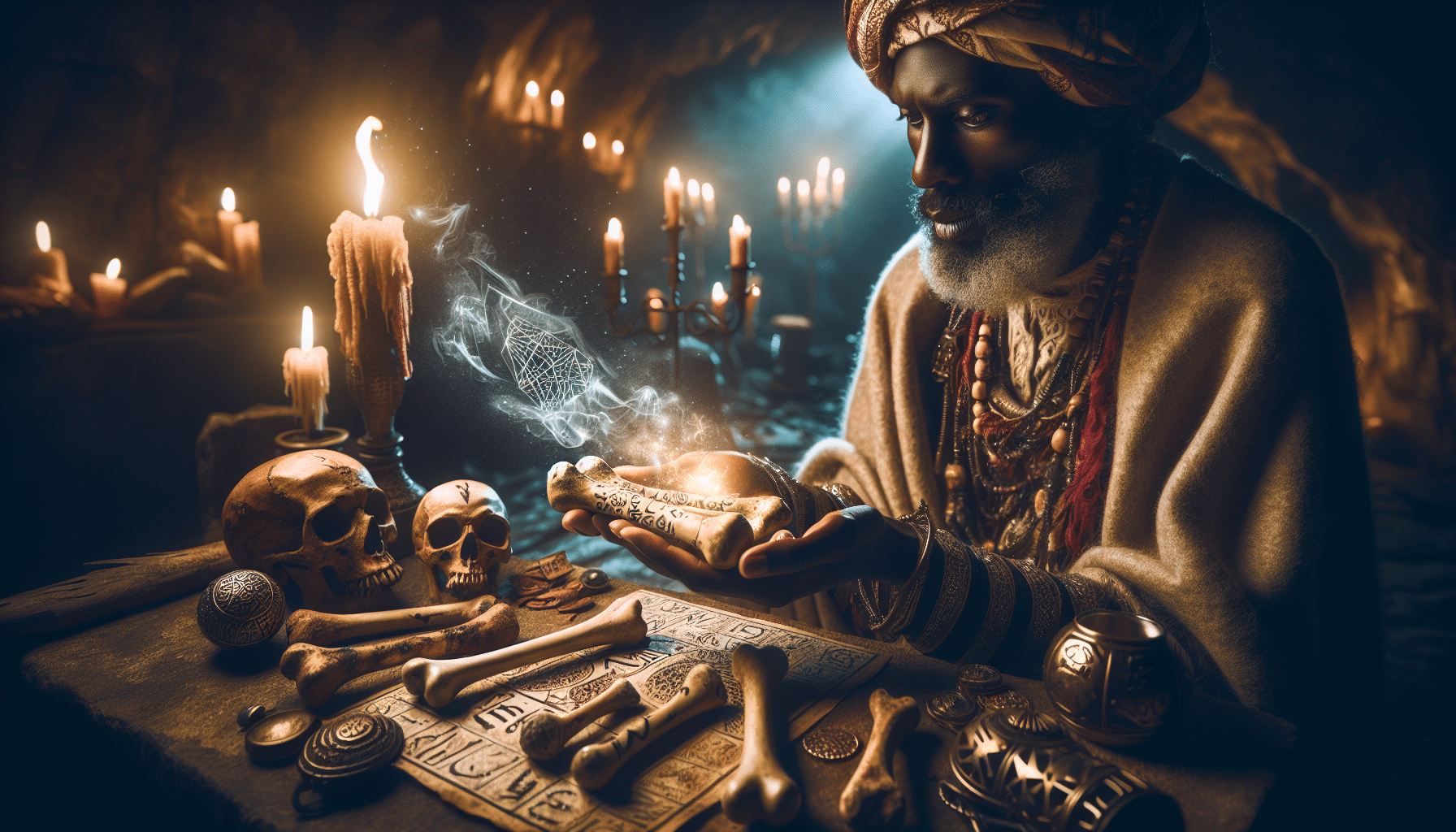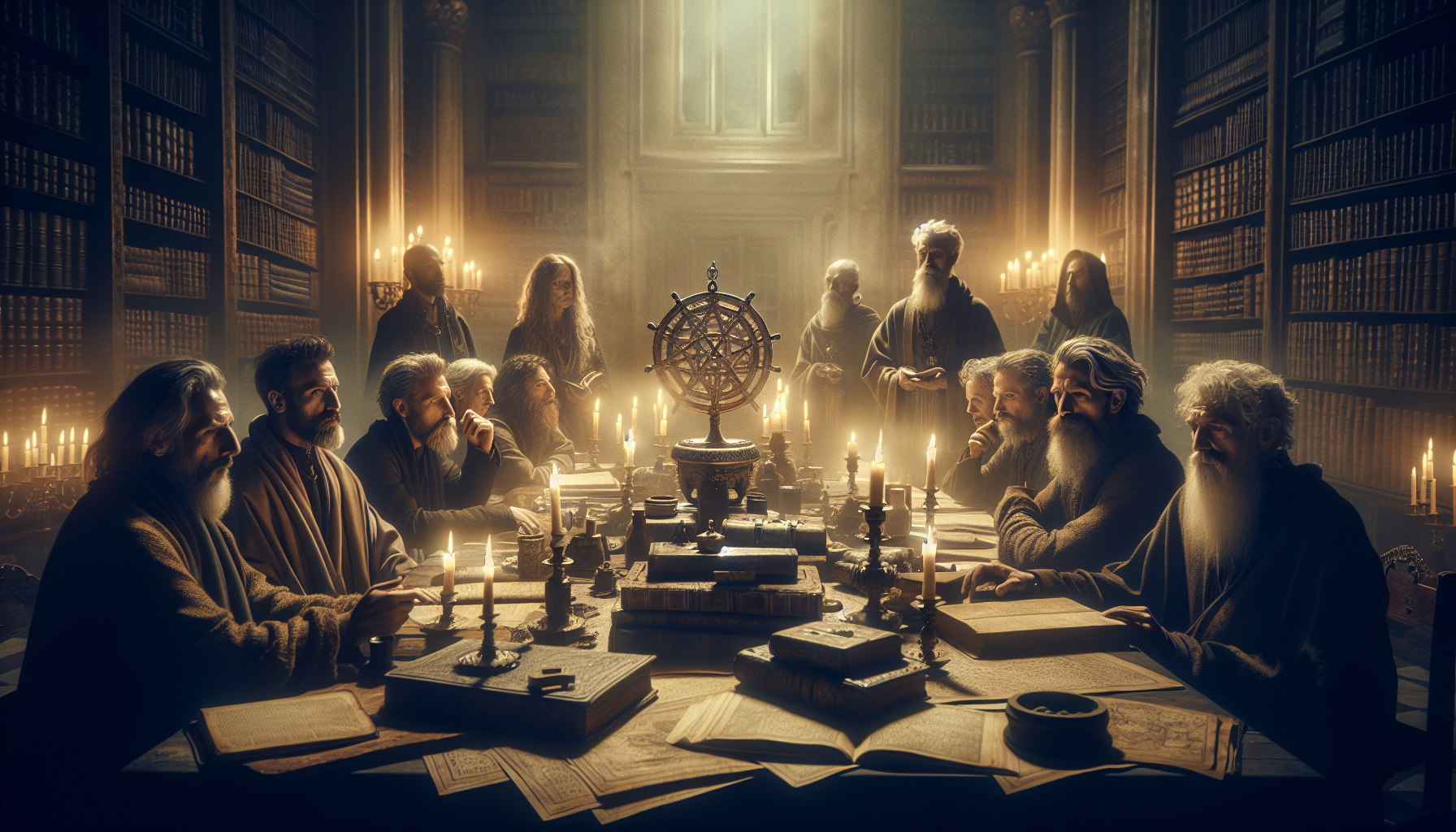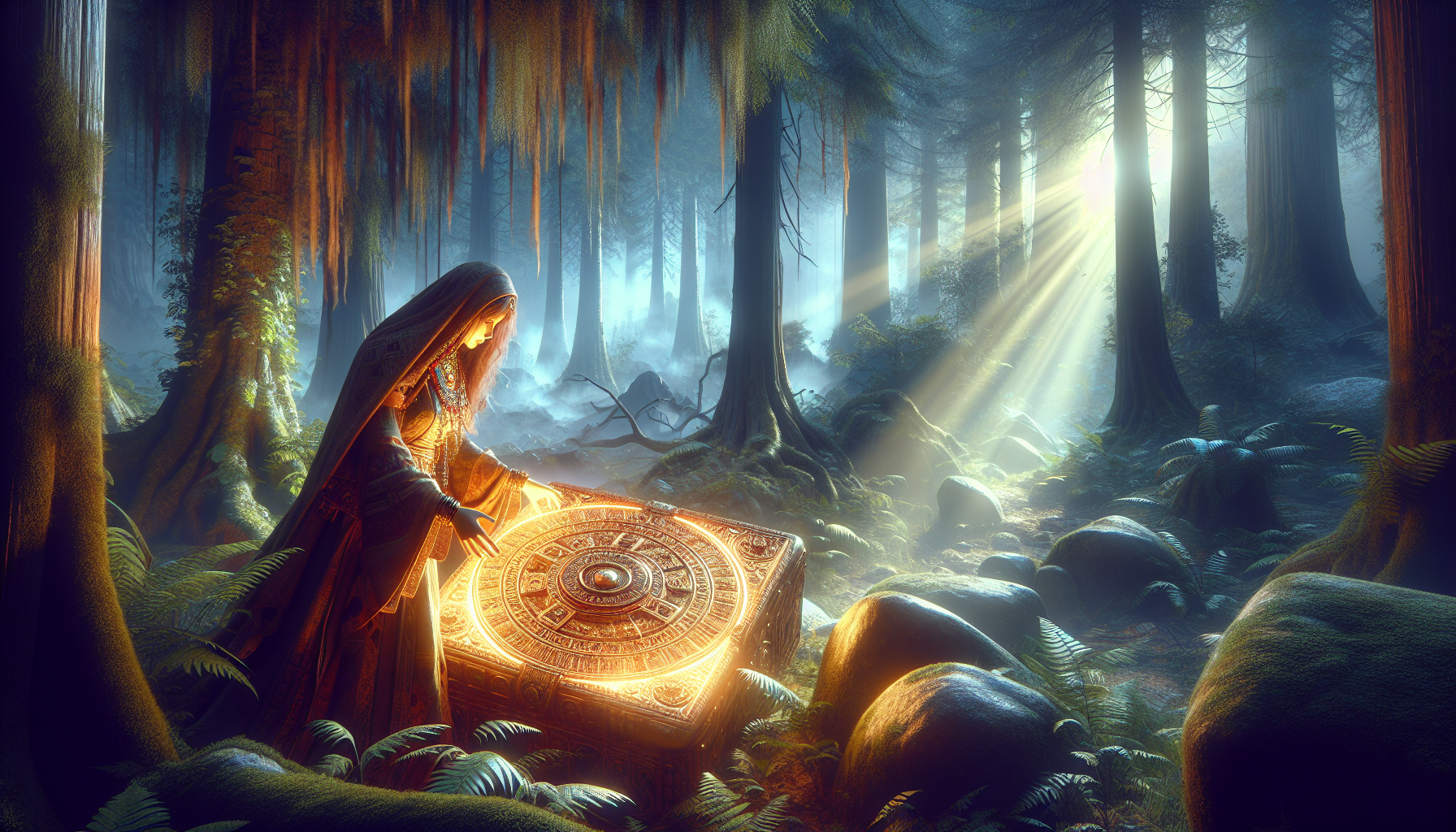In the vast tapestry of human history, few topics have intrigued and mystified us as much as the art of predicting the future. From ancient seers and oracles to modern-day astrologers and clairvoyants, the desire to glimpse into what lies ahead has been a constant thread weaving through our collective consciousness. Among the many fascinating methods of divination, one stands out for its enigmatic allure and ancient origins: the use of prophetic bones. In this article, we will journey into the depths of this mystical practice, unraveling the secrets and stories embedded within these timeworn relics. 🦴✨
The concept of prophetic bones may seem like a plot from a fantasy novel, yet it is deeply rooted in the traditions of various cultures across the globe. For centuries, these bones have been revered as conduits to the divine, believed to possess the power to unlock the mysteries of destiny. But what exactly are prophetic bones, and how did they come to be esteemed as tools for foretelling the future? Our exploration begins with a dive into their historical and cultural significance, tracing their origins to ancient civilizations that held the knowledge of the future in their hands—literally.
From the oracle bones of China, used during the Shang Dynasty over three millennia ago, to the knucklebone divination practices of the Greeks and Romans, the use of bones in prophecy is as diverse as it is ancient. Each culture had its unique approach, imbued with spiritual beliefs and rituals that imbued the bones with their mystical properties. In our exploration, we will traverse continents and epochs, shedding light on how these practices evolved and what they reveal about the societies that embraced them. What drove our ancestors to look to the bones for guidance, and what can these practices teach us about the human psyche and our perennial quest for certainty in an uncertain world?
Beyond the historical context, the allure of prophetic bones lies in the rituals and symbolism that surround them. Every crack and curve in a bone is said to tell a story, a hidden language waiting to be deciphered by those attuned to its secrets. We will delve into the rituals of bone casting and reading, examining the intricate processes that practitioners undertake to connect with the spiritual realm. As we peel back the layers of these ancient customs, we will discover the symbolic significance attributed to different types of bones and the specific questions or situations they are believed to address. How do these rituals reflect the values and beliefs of the cultures from which they originate, and what parallels can we draw with contemporary practices of divination?
Finally, in a world that often feels increasingly disconnected from the mystical and spiritual, the resurgence of interest in ancient divination practices offers a poignant reminder of our enduring fascination with the unknown. As we bring our exploration to a close, we will consider the relevance of prophetic bones in today’s society. Are these practices merely relics of a bygone era, or do they hold valuable insights for those seeking guidance in modern times? By examining the intersection of ancient wisdom and contemporary curiosity, we hope to illuminate the timeless nature of our quest for understanding and the ever-present desire to foresee what the future holds.
The Mystical Origins of Prophetic Bones
The allure of prophecy has captivated human imagination since ancient times. One of the most intriguing methods of foretelling the future involves the use of prophetic bones. The mystical powers attributed to these bones are not just a matter of legend; they are rooted in the traditions and practices of ancient cultures. From the shamans of Siberia to the diviners of Africa, bones have served as conduits to the spiritual realm, offering insights into the unknown.
These bones, often animal in origin, are believed to carry messages from the divine or spiritual world. They are used in a practice known as osteomancy, where diviners interpret the positions and patterns formed by thrown bones. This practice is not merely random; it is steeped in rituals and symbolism that have been passed down through generations. Each culture has its own unique approach to bone divination, reflecting its beliefs and worldview.
In ancient China, for example, the use of oracle bones was a highly sophisticated art. These bones, typically ox scapulae or turtle plastrons, were inscribed with questions about future events. They were then subjected to heat until they cracked, with diviners interpreting the patterns of these cracks to provide answers. This method, known as scapulimancy, is one of the earliest forms of writing and offers a fascinating glimpse into the concerns and priorities of ancient Chinese society.
Bone Divination Across Cultures
While the Chinese practiced scapulimancy, other cultures developed their own distinct methods of bone divination. In Africa, the Sangoma healers of the Zulu people use a set of bones called “Ditaola” to communicate with ancestors and spirits. These bones are not randomly selected; each piece holds a specific significance and role within the divinatory process. The bones may include pieces of animals like lions, baboons, or antelopes, each symbolizing different spiritual messages.
The Siberian shamans, on the other hand, employ bones in their rituals to travel between the physical and spiritual worlds. They often use reindeer or bear bones, invoking the power of these animals’ spirits to guide their visions and interpretations. These rituals are deeply personal, with each shaman developing a unique relationship with their bones and the spirits they represent.
Despite the diversity of methods, a common thread runs through all these practices: the belief in the power of bones to connect the material and spiritual realms. This belief is not just a relic of the past; it persists in various forms even today. Modern practitioners of neo-shamanism and other spiritual traditions continue to explore the potential of bones as tools for divination and spiritual growth.
The Science Behind the Mysticism
While the mystical aspects of bone divination are fascinating, there is also a scientific dimension to consider. Anthropologists and archaeologists have long studied the use of bones in ancient rituals, seeking to understand the cultural and historical contexts in which these practices arose. Their findings reveal the complex interplay between belief systems, social structures, and environmental factors that shaped the development of bone divination.
One of the key scientific inquiries into bone divination involves understanding the symbolic language used by different cultures. This involves analyzing the specific types of bones used, the patterns they form, and the interpretations assigned to these patterns. By studying the remains of ancient divination practices, researchers can reconstruct the symbolic systems that underpinned these cultures’ worldviews.
In addition to symbolic analysis, scientists have also explored the psychological effects of bone divination. The ritualistic nature of these practices, combined with the deep cultural significance of bones, can induce altered states of consciousness in practitioners. These altered states may enhance intuitive abilities and facilitate communication with the spiritual realm, providing a scientific basis for the mystical experiences reported by diviners.
Comparative Analysis of Divinatory Methods
To better understand the diversity of bone divination practices, it is helpful to compare them with other methods of prophecy. The table below provides a comparative analysis of various divinatory methods, highlighting their similarities and differences:
| Method | Origin | Materials Used | Interpretation Process |
|---|---|---|---|
| Bone Divination | Global (e.g., Africa, China, Siberia) | Animal bones (e.g., ox, turtle, reindeer) | Patterns and positions of bones |
| Tarot Reading | Europe | Tarot cards | Symbolic imagery on cards |
| I Ching | China | Yarrow stalks or coins | Hexagram patterns |
| Runecasting | Norse | Runestones | Runic symbols |
Each method of divination offers a unique perspective on the future, shaped by the cultural and spiritual context in which it developed. By exploring these differences, we can gain a deeper appreciation for the rich tapestry of human belief and the enduring quest for understanding the unknown.
The Role of Prophetic Bones in Modern Spirituality
As the world becomes increasingly interconnected, there is a growing interest in exploring ancient spiritual practices, including the use of prophetic bones. This resurgence is part of a broader trend towards reclaiming traditional wisdom and integrating it into contemporary spiritual practices. Many people are drawn to the tangible, tactile nature of bone divination, finding comfort and guidance in the physical connection to the natural world.
Modern practitioners often incorporate elements of bone divination into holistic healing practices, using bones to gain insights into clients’ spiritual and emotional well-being. This approach aligns with the broader movement towards integrative medicine, which seeks to address the whole person rather than just symptoms. By connecting with the spiritual energy of bones, practitioners aim to facilitate healing on a deeper, more profound level.
The accessibility of information and resources online has also contributed to the revival of interest in bone divination. There are numerous tutorials, workshops, and communities dedicated to teaching and exploring these ancient practices. For those interested in learning more, YouTube offers a wealth of videos that delve into the techniques and interpretations of bone divination. One such video worth watching is “Exploring Bone Divination” by the channel Shamanic Journeys, which provides an insightful overview of the practice.
The future of bone divination is bright, as more people seek to reconnect with ancient traditions and explore their spiritual potential. As interest grows, it is important to approach these practices with respect and understanding, honoring the cultural heritage from which they originate. This means engaging with the material thoughtfully and ethically, ensuring that the wisdom of the past is preserved and respected for future generations.
With the integration of modern technology, the possibilities for bone divination are expanding. Digital tools and apps can aid in the learning and practice of bone divination, making it more accessible to a global audience. These tools can enhance understanding, provide new ways to engage with the practice, and foster a sense of community among practitioners worldwide.
Ultimately, the mystical powers of prophetic bones continue to captivate and inspire, offering a bridge between the known and the unknown, the past and the present. As we navigate an increasingly complex world, the ancient art of bone divination provides a timeless source of guidance and wisdom, inviting us to explore the mysteries of the universe with an open heart and mind.

Conclusion
The exploration of the mystical powers of prophetic bones has taken us on a fascinating journey through history, culture, and the enigmatic art of future foretelling. As we’ve delved into this captivating topic, several key points have emerged that highlight not only the historical significance but also the enduring intrigue surrounding these ancient practices.
Firstly, we examined the historical context of prophetic bones, tracing their origins back to ancient civilizations such as the Chinese, where oracle bones played a crucial role in divination practices. These bones, often inscribed with intricate symbols, were used by shamans and seers to seek guidance from the divine. The process of heating the bones and interpreting the resulting cracks was seen as a direct line to the spiritual realm, showcasing the deep-seated belief in their mystical powers.
Furthermore, we explored the cultural significance of these practices. In many societies, prophetic bones were not only tools for foretelling the future but also held a revered status as sacred objects. They were often part of elaborate rituals, underscoring the profound connection between spirituality and the physical world. This cultural reverence highlights the universal human quest for understanding and predicting the unknown.
In addition to their historical and cultural importance, the article delved into the symbolic nature of prophetic bones. The bones themselves, often derived from animals considered powerful or sacred, carry symbolic meanings that are integral to the divination process. This symbolic aspect enriches the practice, allowing for a more nuanced interpretation of the messages believed to be conveyed through the bones.
Moreover, we discussed the modern resurgence of interest in ancient divination practices, including the use of prophetic bones. In today’s world, where uncertainty often looms large, many individuals are turning to these age-old methods for guidance and insight. This resurgence is not only a testament to the enduring appeal of divination but also reflects a broader trend of seeking wisdom from ancient traditions in contemporary times.
The significance of understanding prophetic bones extends beyond mere curiosity. It serves as a reminder of the timeless human desire to peer into the future, to seek answers, and to find comfort in the face of uncertainty. By studying these practices, we gain insight into the universal human experience and the ways in which different cultures have attempted to connect with the divine and the unknown.
As we conclude this exploration, it is important to recognize the value of preserving and studying these ancient traditions. They offer us a window into the past, illuminating the beliefs and practices of our ancestors. More importantly, they challenge us to reflect on our own beliefs and the ways in which we seek meaning and guidance in our lives.
In this rapidly changing world, where technology often dominates, the mystical powers of prophetic bones remind us of the richness and diversity of human culture and spirituality. They invite us to embrace a broader perspective, one that honors the wisdom of the past while remaining open to new possibilities.
As you reflect on the insights shared in this article, consider how you might incorporate the lessons of prophetic bones into your own life. Whether it’s through exploring ancient practices, engaging with cultural traditions, or simply seeking to understand the deeper meanings in your daily experiences, there is much to be gained from this exploration.
We encourage you to share your thoughts, experiences, and reflections on this topic. Engaging in a dialogue not only enriches our understanding but also fosters a sense of community and shared learning. Feel free to leave a comment below, share this article with friends and family, or even embark on your own journey of discovery into the mystical and the unknown. 🌟
For further reading and exploration, consider these resources:
1. Ancient Origins
2. Smithsonian Magazine
Thank you for joining us on this journey through the mystical powers of prophetic bones. May the wisdom of the ancients inspire and guide you as you navigate the complexities of the modern world. 🕊️
Toni Santos is a visual storyteller and symbolic artisan whose work unearths the sacred in forgotten places — a seeker of relics not cast in gold, but in petal, vine, and stone.
Through a reverent artistic lens, Toni explores nature as a vessel for unknown religious relics — sacred echoes embedded in botanical forms, remnants of spiritual traditions that were never written but always felt. His creations are not merely decorative; they are quiet devotions, fragments of invisible altars, living prayers suspended in time.
Guided by an intuitive connection to flora and the mysteries they carry, Toni transforms botanical elements into symbolic artifacts — each one a relic of forgotten faiths, imagined rituals, or ancient wisdom left behind by time. His work invites reflection on how the divine speaks through organic beauty, and how the sacred often hides in the overlooked.
As the creative voice behind Vizovex, Toni curates collections and visual meditations that feel like lost sacred texts — poetic, intentional, and charged with quiet meaning. From floral talismans to mythic botanical studies, his work bridges earth and spirit, nature and memory.
His work is a tribute to:
The invisible sanctity found in everyday natural forms.
The mythic energy of plants as spiritual messengers.
The act of creating relics from silence, shadow, and growth.
Whether you’re drawn to mysticism, symbolic art, or the sacredness woven into the natural world, Toni invites you to explore a space where forgotten relics are remembered — one leaf, one symbol, one sacred fragment at a time.





